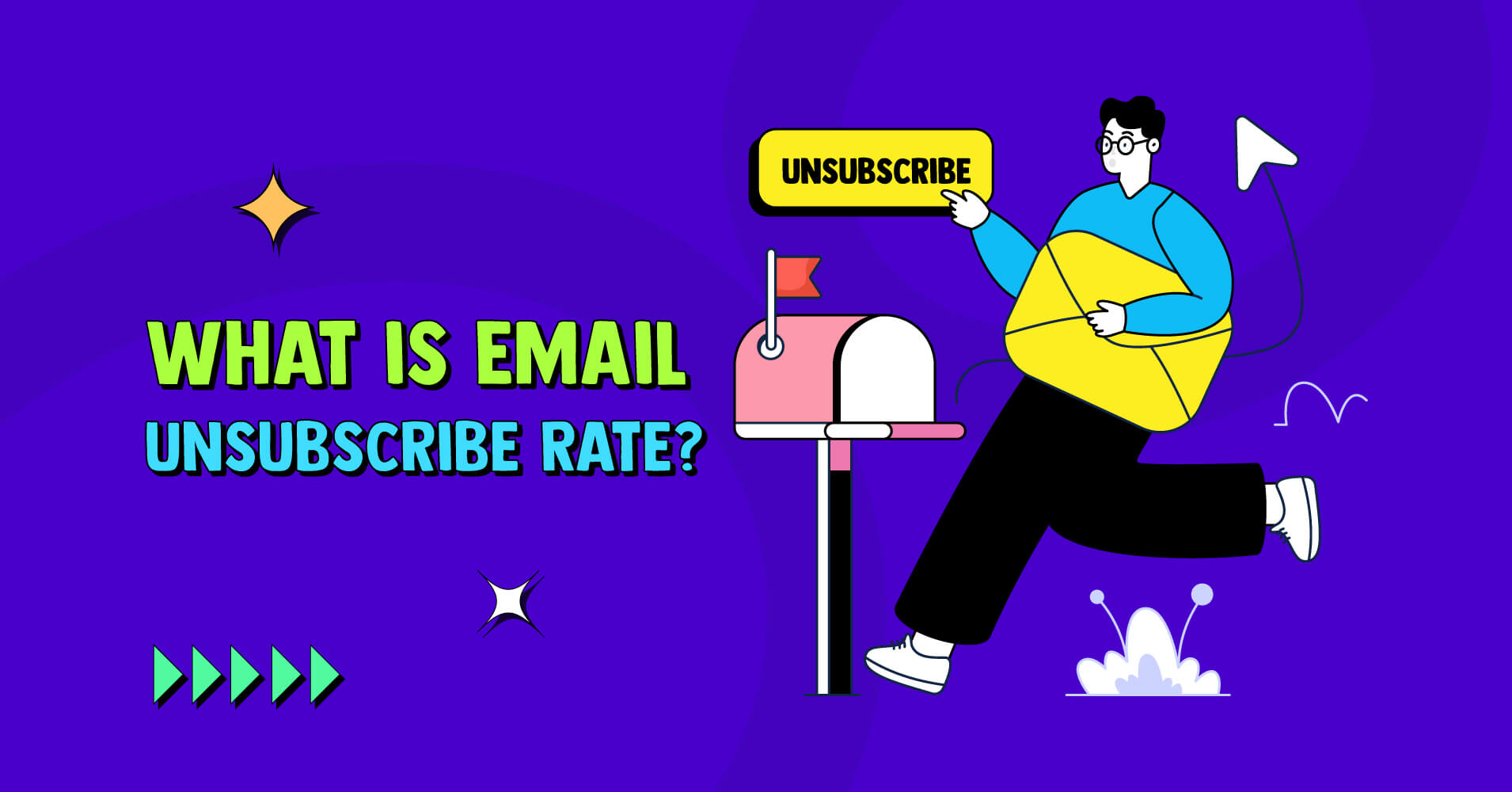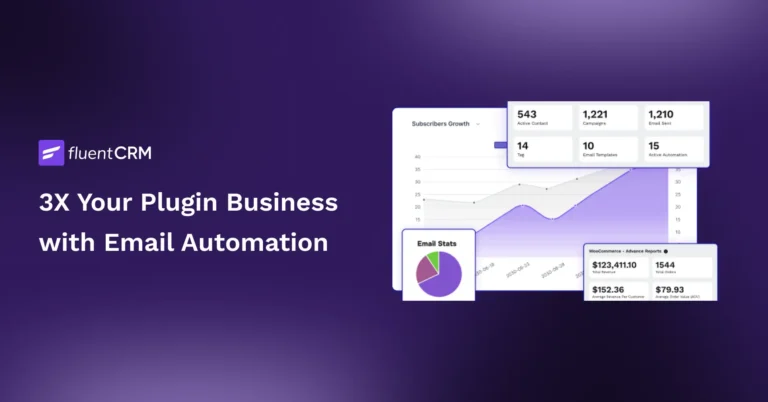
What is Email Unsubscribe Rate? + 11 Proven Ways to Reduce It
The email unsubscribe rate shows the percentage of people who lost interest in what you do. It’s undoubtedly a bummer for any company and deserves much more attention than it usually gets. Even though some people will inevitably unsubscribe, there are many ways to reduce the email unsubscribe rate.
In this blog, we’ll go over the most effective ways of reducing the email unsubscribe rate and everything else you need to know about it.
First, let’s get familiar with the email unsubscribe rate and learn how to calculate it.
What is Email Unsubscribe Rate?
Email unsubscribe rate is the percentage of people who decided to stop receiving emails from your email list after having previously subscribed. It indicates the percentage of users who opted out of your email marketing campaigns. While it doesn’t provide the exact number of opted-out users, it serves as a metric to assess the success of your emails and whether they are perceived as valuable or spam by recipients.
Industry, email content quality, email frequency, and email relevance are just some of the variables that significantly impact the unsubscribe rate. Just like click rate and click-through rate, it’s a crucial indicator of how successful your campaign is.
Since the appropriate unsubscribe rate can vary across industries and audiences, there is no single standard against which all can be measured. However, research shows that between 0.2% and 0.5% of subscribers will opt out of future emails. If it’s more than that, you should recheck your email marketing strategy.
How to Calculate the Email Unsubscribe Rate?

Measuring the email unsubscribe rate of a campaign is possibly the easiest task of the whole campaign. To calculate your email unsubscribe rate, divide the number of unsubscribes by the total email recipients and multiply by 100. This resulting percentage indicates your email unsubscribe rate for the campaign.
For example, let’s say you have sent emails to 5000 recipients during your campaign and the number of unsubscribers is 50. According to the formula, your unsubscribed rate would be—
(50/5000)*100 = 1%
Why Do People Unsubscribe?
There may be numerous reasons behind an individual unsubscribing and you can’t keep everyone on your list forever. But if you see an alarming unsubscribe rate, the possible reasons may be:
- You send Irrelevant content that doesn’t align with your user’s needs or interests
- You don’t know the email frequency rules, and your campaigns are overwhelmingly frequent
- Your email content is poor, lacks value, or contains errors
- Your subscribers may have changed their preferences
- Being on your email list no longer serves your subscriber’s purpose
- The users are concerned about privacy or don’t trust your business
- Unpleasant user experience (difficult to unsubscribe, complicated opt-out process).
- Switching to other communication channels or platforms
If you think one or more reasons reflect your case, don’t worry. You can turn the tables in your next email marketing campaign with just a few tweaks.
11 Effective Ways to Reduce Email Unsubscribe Rate
Reducing the email unsubscribe rate is surely no rocket science. It’s possible to guess a few reasons why it happened. Nonetheless, we won’t leave you guessing. Here are the 10 proven ways to reduce email unsubscribe rates:
1. Don’t Buy Email Lists
Many email marketers buy email lists to start their email marketing journey. If you have done the same, it’s no surprise that your campaign’s email unsubscribe rate is high.
Buying email lists comes with various risks and getting loads of unsubscribes from each campaign is one. As the recipients of your purchased email list usually don’t share a common interest, a huge number of them unsubscribe immediately after receiving your emails.
That’s why you should build your email list and start sending emails to them. This will not only decrease email unsubscribe rates but also increase overall conversions.
2. Use a Combination of Single and Double Opt-in
While single opt-in is easier and hassle-free, it has some disadvantages too.
Single opt-in will get you:
- People who are not interested
- A huge number of emails may be fake
- Frequent unsubscribe from your list
On the other hand, double opt-in is a bit complex and might reduce the chances of making someone subscribe, but it comes with a few benefits.
From double opt-in, you get:
- Genuinely interested people
- Better email open and click-through rate
- Guaranteed engagement
According to a study, almost 20% of people who subscribe are not interested in going the extra mile to confirm their email address.
What should you do?
Well, we suggest using a combination of these two.
- Sales emails are at high risk of triggering spam filters. So it is ideal to use double opt-in to avoid spamming.
- On the other hand, a single opt-in is fine for newsletters.
To find out the golden ratio of these two, keep testing and see what works for you the best. You can check out our opt-in marketing guide to employ these tactics the right way.
3. Segment Your Email List
When it comes to email marketing, segmentation is the key. Without segmenting your contacts, you won’t be able to provide your users with what they are looking for. Hence, your email unsubscribe rate will go higher.
You should segment your users based on various metrics, behaviors, actions, etc. Once you have done so, then you should run your campaigns directly targeting specific groups of people and offering valuable content to the recipients through your emails. When people receive valuable content, they are less likely to unsubscribe.
4. Personalize Your Emails
Sending a generic email to all your recipients is a very common email marketing mistake. This makes the users feel less valued and they don’t feel interested in further emails. On the flip side, if you tailor all your emails to specific segments of your contact list, you’ll be able to develop nicely personalized emails. These emails will make your users feel valued, and they’ll stay in the loop willingly.
5. Let Your Recipients Decide What They Want to Receive
Might sound surprising, but giving your users the freedom to customize things can reduce the overall unsubscribe rate. Guess how?
Whether someone is going to stay subscribed or not depends entirely on how you make your users feel. If they feel like you are not taking advantage of them and they are free to choose what they want to receive, they’ll choose to keep receiving your emails instead of unsubscribing. So, allow your recipients to decide how often they want to receive emails and what type of emails they want to receive. Ideally, you should also have an easy opt-out process to demonstrate your confidence.
6. Take Feedback to Make Users Feel Valued
We bet you feel super good when you are asked for feedback after taking any service or buying any product. While it can be annoying at times, let’s not forget how it feels when a company changes something based on our feedback.
The same is key for every company that’s sending emails to their subscribers. By asking for feedback, we don’t mean that you should only take feedback and stay put. Utilize user feedback and improve your business as a whole. This makes the users feel they are in control. And who would ever unsubscribe from an email list where they are valued to such an extent?
7. Maintain a Good Email Frequency Ratio
While sending emails at the right time can do wonders for your business, sending too many emails or sending them at the wrong time can do the complete opposite.
Before starting your email campaign, understand how many emails you will send and when. Sending more emails does not necessarily mean better results. Rather, sending emails at the right frequency is what drives positive results.
For example, if the first email of your email sequence is a welcome email, don’t send the next email immediately. Wait for a day or two and then send your other onboarding emails.
This way, you will be able to get what you want and no one will unsubscribe from your email list due to annoyance.
8. Provide Useful and Relevant Content
Content is the king and for email marketing, it indeed is. If your content fails to add value to your users, no matter what optimizations you do for your campaign, you’ll get a disappointing unsubscribe rate.
On the other hand, sending helpful and relevant content will make your emails appealing to the users. They will wait for your next email and the email unsubscribe rate will decrease dramatically.
9. Focus on Your Subject Lines
Whether your emails are going to be opened or not often depends on the subject line. With the newly implemented email deliverability rules, email marketers are now required to add a one-click unsubscribe URL with their subject line. What this means is people can unsubscribe right after they’ve read your email subject line.
If you keep sending your users emails they don’t even feel like opening, they’ll just unsubscribe from your emails without even opening. That’s why writing catchy subject lines and A/B testing them is crucial now. So make sure you’re writing a good subject line and run a split test. Once you know which subject lines perform better, you will start enjoying reduced unsubscribe rates.
10. Optimize for Different Devices
Optimizing your emails for all sorts of devices is a must in this competitive digital marketing scene. If you don’t provide the best experience for your users, you run into the risk of losing them. And that’s what happens when your emails are not optimized for your recipient’s devices.
The recipients unsubscribe from those emails that are not easy to access from mobile or are not readable. That’s why you need to be careful about the email format, design, and media files you are attaching to your emails.
11. Provide Regular Offers
Among all the different sorts of things you can send to your users through emails, guess what has the best chance of winning them?
Coupons, discounts, and gifts!
These three magical elements can make any subscriber open the email and click on the link. And if you have witnessed an alarming unsubscribe rate on your recent email marketing campaigns, try providing offers the next time.
Offers will not only reduce the unsubscribe rate but also increase the overall open rate, click rate, and conversions.
Wrapping Up
Even though many email marketers don’t prioritize email unsubscribe rates as they do for other metrics, we hope you have understood how important of a metric it is. Now, with your newfound knowledge, we hope you’ll be able to reduce the unsubscribe rate for your email marketing campaigns.
If you have any suggestions or hacks that are helping you to keep the email subscription rate low for your business, don’t forget to let us know through comments!
Sakhawat Showrabh
From writing poems and short stories to writing technical stuff about WordPress and email marketing, plenty of things have changed. What didn’t change is my love for writing and wasting time. When I am not writing, I waste my time peacefully.
Table of Content
Related Articles and Topics
Comments
-
Each and every points are must for bloggers. Thank you for sharing






Leave a Reply